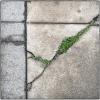Editing software for someone with limited experience
-
Recently Browsing 0 members
- No registered users viewing this page.
-
Similar Content
-
- 24 replies
- 11,177 views
-
- 1 reply
- 349 views
-
- 4 replies
- 230 views
-
- 0 replies
- 120 views
-
- 13 replies
- 881 views
-



Recommended Posts
Join the conversation
You can post now and register later. If you have an account, sign in now to post with your account.
Note: Your post will require moderator approval before it will be visible.